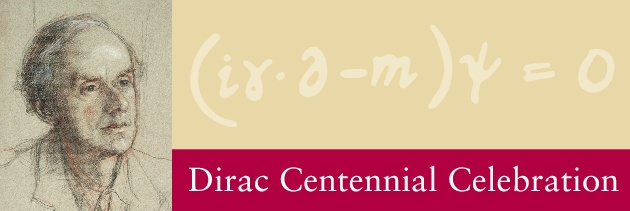 | |||||||||||||||
| (portrait by R. Tollast, 1963; reproduced by permission of the Master and Fellows of St. John's College, Cambridge) | |||||||||||||||
Paul Adrien Maurice Dirac (August 8th 1902 -- October 20th 1984) was one of the great theoretical physicists of the twentieth century. Amongst his many contributions was his theory of the electron which led him to predict the existence of anti-matter. He made many other important early discoveries in quantum mechanics and quantum statistical mechanics. He also laid the foundations of quantum field theory, which underlies much of contemporary condensed matter and elementary particle physics. His theory of the magnetic monopole has influenced many modern developments at the interface of theoretical physics and mathematics. Dirac spent most of his career in the Mathematics Faculty in the University of Cambridge and at St. John's College. He was awarded the Nobel Prize together with Schrödinger in 1933. | |||||||||||||||
| Saturday July 20th 2002 | |||||||||||||||
| 2:30pm-5:30pm | |||||||||||||||
| Centre for Mathematical Sciences, | |||||||||||||||
| Wilberforce Road, Cambridge | |||||||||||||||
| Public lectures: | |||||||||||||||
| |||||||||||||||
| Brief biographical and research highlights of Paul Dirac. | |||||||||||||||
| Dirac's lecture "The Relation between Mathematics and Physics" which he delivered on presentation of the JAMES SCOTT prize, February 6, 1939. | |||||||||||||||
| See also "Dirac's legacy" in issue 13 of the PPARC Frontier magazine. | |||||||||||||||
|
|

